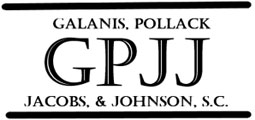Wisconsin Court of Appeals Clarifies the Necessary Elements of Wisconsin Products Liability Design Defect Cases
In 2011, the Wisconsin Legislature created Wisconsin Statute §895.047, establishing and redefining the necessary proof for claims of strict product liability (this expansive piece of legislation is commonly referred to as “Act 2”). In a recent opinion, Murphy v. Columbus McKinnon Corp., the Wisconsin Court of Appeals provided guidance on how this broad-sweeping legislative change comports with past Wisconsin common-law history regarding products liability law.
In Murphy, the plaintiff brought a design defect claim against a product manufacturer for the defective design of metal tongs, which were used to lift or drag heavy wooden utility poles. At issue in the case was whether the plaintiff had supplied sufficient evidence to survive summary judgment, including whether the plaintiff’s expert presented a reasonable alternative design and whether a jury could find that the design was not reasonably safe.
Wisconsin Statute §895.047 classifies strict product liability claims into three categories: defective design, defective product manufacture, or inadequate warning. Prior to 2011, in order to prove defective design, Wisconsin followed the §402A of the Restatement (Second) of Torts standard “consumer-contemplation” or “consumer-expectations” test. If the average consumer would reasonably anticipate the dangerous condition of the product and fully appreciated the attendant risk of injury, the product would not be unreasonably dangerous and therefore defective.
The Restatement (Third) of Torts altered the proposed standards of proof. Under §2 of the Restatement (Third), a plaintiff must prove a design defect by satisfying a “risk-utility” balancing test (though, consumer expectations can be considered as a factor within this test). The plaintiff must show that the net utility and costs of an alternative design would limit the foreseeable risks presented by a product design.
By implementing Act 2, the Wisconsin Legislature adopted the risk-utility balancing test from the Restatement (Third), but it retained the “unreasonably dangerous” test from the Restatement (Second). Therefore, one must consider the “foreseeable risks of harm,” must provide a “reasonable alternative design,” and must prove that the product is “unreasonably dangerous” in order to successfully prove a design defect.
Therefore, the Wisconsin Legislature’s decision to subject claims of product design defects to a “risk-utility balancing test” does not completely overrule prior common law, but it significantly supplements the “consumer-contemplation test” formerly adhered to under the common law in Wisconsin.
One must be knowledgeable about the burden of proof when contemplating products liability litigation. If there are any questions regarding product liability claims, Aaron Plamann possesses a mechanical engineering degree and can help guide you through the products liability maze. Please give him a call at (414) 271-5400 or email him at aplamann@gpjlaw.com.


